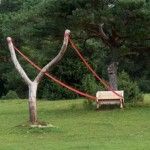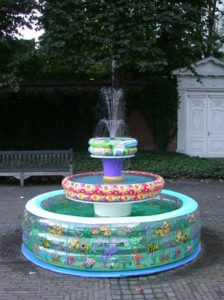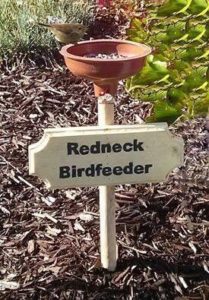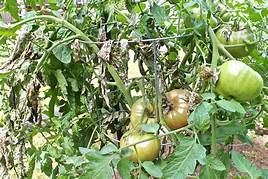Can a gardener go on vacation in the summer time? You depart, however, with a heavy heart, full of fears and cares for your garden; and you say, “Look here. There is nothing to be done in the garden and flowerbeds, if you come and look once in three days, that will be quite enough.”
So, when I leave, having laid my garden upon the heart of an obliging neighbor or friend. Next day the fellow-creature receives a call from me: “I forgot to tell you that the garden has to be checked for moisture every day, the best times for doing it are five in the morning and toward seven in the evening. It is practically nothing, you only fasten the hose to the hydrant and water for a few moments.”
“Will you please water the new planted apple trees and thoroughly, and the lawn as well? If you see any weeds, pull them out. That’s all, 
oh I forgot the perennials, which are now in flower, ought to have a good deal of water. Withered stalks must be cut off! It would be a good thing if you loosened all the beds with a hoe; the soil breathes much better then. If there are aphids on the roses, buy a systemic insecticide and spray.”
The third day: “I forgot to tell you that the lawn must be cut; you can do it easily with the mower, and what the mower does not take, you cut with clippers. But beware! after mowing the grass it must be well raked, and afterwards swept with a sweeper! Otherwise the lawn gets bald patches! And water, plenty of water!”
The fourth day: “If a storm comes, will you please run and look at my garden? A heavy rain sometimes causes damage, and it is good to be on the spot. If mildew appears on the roses, sprinkle them early in the morning while the dew is still on them with flowers of sulfur. Tie high perennials to sticks so that the wind does not break them. Don’t forget to water every day the hostas near the house, it is too dry for it there. I hope that you have already mowed the lawns.”
The fifth day: “I am sending you a box of plants, which I dug up here. They are various wildflowers, wild lilies, Pasque flowers, bugworts, and others. Immediately you have got the box, open it, and damp the seedlings, and plant them somewhere in a shady place! Plant immediately and water three times a day! Please cut the spent branches of the roses.”
The sixth day: “I am sending a box of plants from a nursery . . . They must go into the ground at once . . . At night you are to go into the garden with a lamp and destroy slugs and hornworms. It would be good to weed the paths. I hope that looking after my garden doesn’t take up much of your time, and that you are enjoying it.” “I hope that you have already mowed the lawn. You needn’t do anything else.”
And in the meantime, I wonder with uneasiness of the flowers and lawns, sleep badly, curse because the garden caretaker is not sending me reports every day on the state of the garden.
I have not even mention taking care of the dogs and cats which no one is trusted to do! Guess I will stay home!









